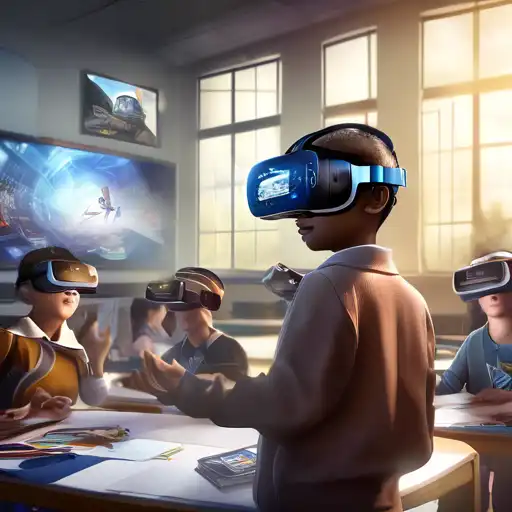Introduction to Virtual Reality in Education
Virtual Reality (VR) is revolutionizing the educational landscape, offering immersive learning experiences that were once beyond imagination. This technology transports students to virtual worlds, making learning more engaging, interactive, and effective. As we delve into the potential of VR for education, it's clear that we're standing on the brink of a new era in teaching and learning.
The Benefits of Virtual Reality for Students
VR in education provides numerous benefits, including enhanced engagement, improved retention rates, and the ability to simulate real-world scenarios. Students can explore historical sites, dissect virtual frogs, or even travel through the human bloodstream, all from the safety of their classroom. This hands-on approach caters to various learning styles, making education more inclusive.
Engagement and Motivation
One of the key advantages of VR is its ability to captivate students' attention. Traditional learning methods often struggle to maintain student interest, but VR's immersive nature ensures that learners are fully engaged in the subject matter.
Experiential Learning
VR facilitates experiential learning, allowing students to practice skills in a risk-free environment. For instance, medical students can perform virtual surgeries, gaining valuable experience without the consequences of real-life mistakes.
Implementing VR in the Classroom
Integrating VR into educational settings requires careful planning and consideration. Schools must assess their technological infrastructure, train educators, and select appropriate VR content that aligns with their curriculum. Despite these challenges, the potential rewards make VR an investment worth considering.
Choosing the Right VR Tools
With a plethora of VR tools available, selecting the right one is crucial. Factors to consider include cost, compatibility with existing devices, and the quality of educational content provided.
Training for Educators
For VR to be effectively integrated into the classroom, teachers must be adequately trained. Professional development programs can equip educators with the skills needed to harness VR's full potential.
Challenges and Considerations
While VR offers exciting opportunities for education, there are challenges to address. These include the high cost of VR equipment, the need for technical support, and concerns about screen time and health effects.
Cost and Accessibility
The expense of VR technology can be prohibitive for some schools, potentially widening the digital divide. Finding cost-effective solutions is essential to ensure all students have access to these learning tools.
Health and Safety
Prolonged use of VR headsets can cause discomfort or motion sickness in some users. Establishing guidelines for safe VR use is important to protect students' well-being.
The Future of VR in Education
As VR technology continues to evolve, its applications in education will expand. Future developments may include more affordable VR solutions, enhanced interactivity, and personalized learning experiences tailored to individual student needs.
Virtual Reality is set to transform education, making learning more immersive, interactive, and impactful. By embracing this technology, educators can provide students with unparalleled learning experiences that prepare them for the future.
For more insights into innovative learning technologies, explore our Technology in Education section.
